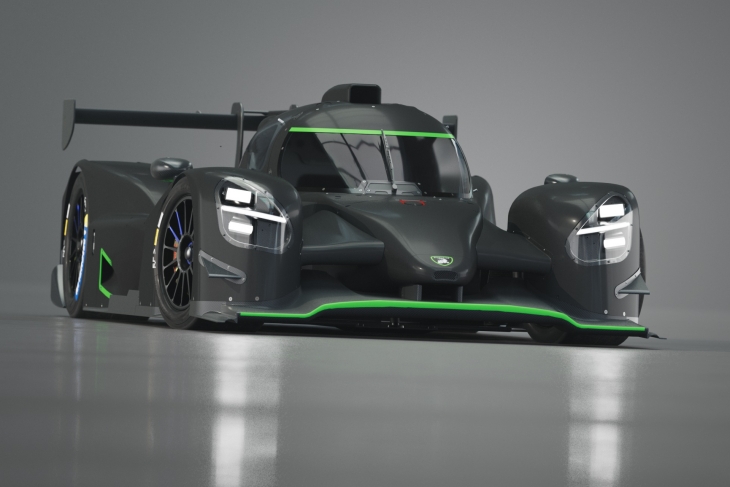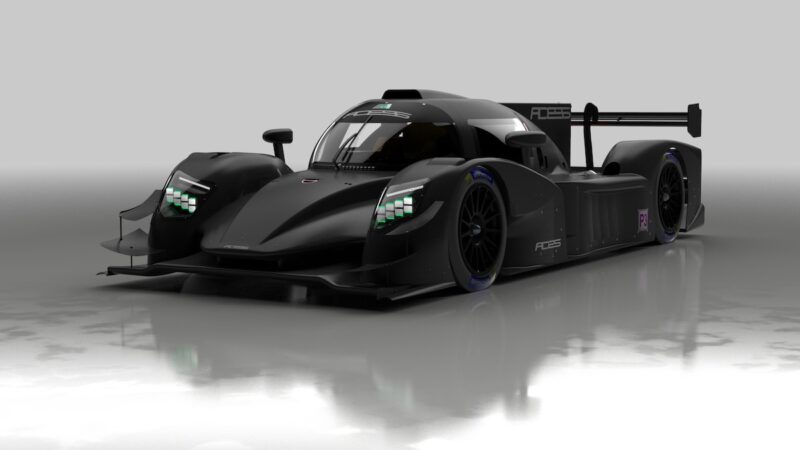Introduction
Announced together with Toyota as one of the first manufacturers to commit to the Hypercar regulations, after some back and forth Aston Martin ended up abandoning the project, claiming misalignments with the convergence process between IMSA and ACO so that LMH and LMDh could compete together in the WEC and eventually the WeatherTech SportsCar Championship. With this, the project that had already been started was then turned into the Valkyrie AMR-Pro, a no-limits track only version of the Valkyrie, sold to special customers of the English brand.
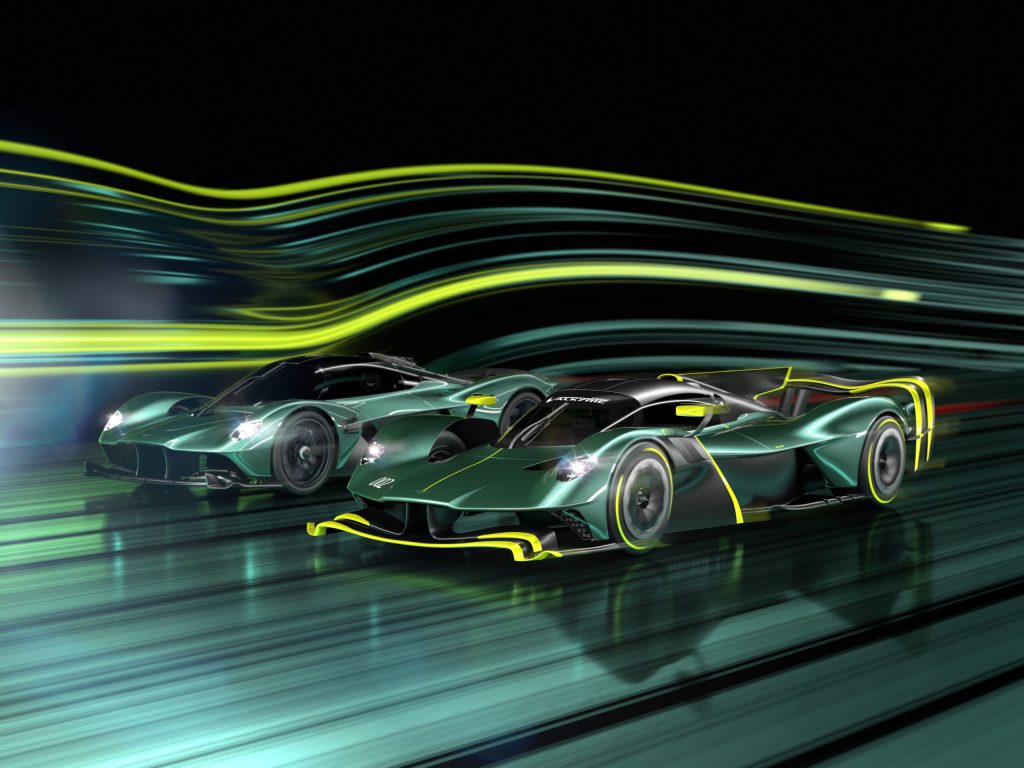
Resurrection of the Valkyrie Hypercar program
However, in an unexpected turn of events, the Heart of Racing team, Aston’s traditional partner in the GT categories, announced that it would resurrect the Valkyrie Hypercar program, and has been testing the new car’s solutions since 2023 using two Valkyrie AMR-Pro chassis. On July 17, the first images of the Valkyrie LMH being tested at the Silverstone circuit appeared on Reddit (r/wec), and today we bring a comparative analysis between the Valkyrie AMR-Pro and the Valkyrie AMR-LMH, showing the main modifications between the two versions.
Tech Analysis
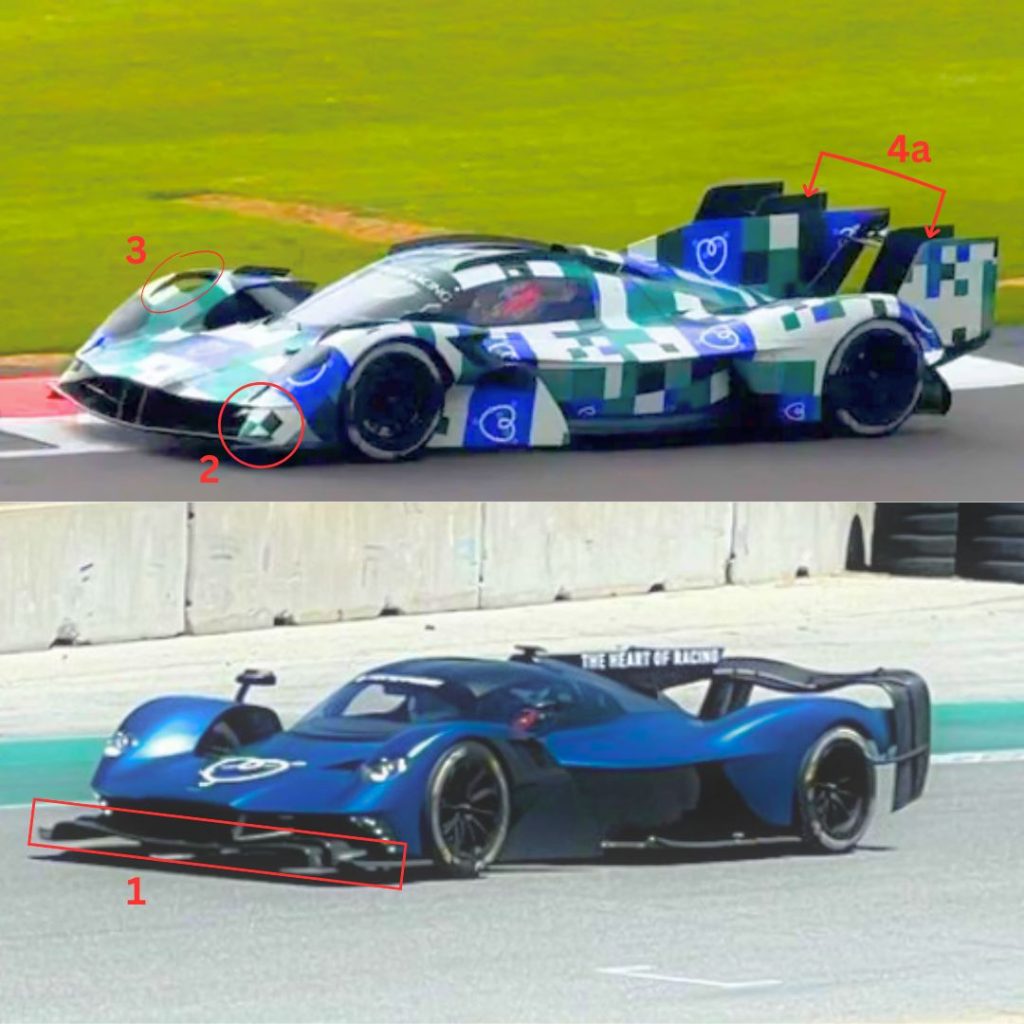
The front wing (1) has been completely redesigned on the Valkyrie LMH, with a flatter profile and a second element in contrast to the curved profile with a vortex generator at the foot plate present on the AMR-Pro. But the biggest visual change was in the bodywork just below the headlights (2), which for the LMH projects forward. On the wheel arches, ventilation openings, or Big Honking Holes (3) were added, to comply with the regulations. We can see an interesting solution on the rear wing (4a), with the presence of the infamous aerodynamic fences integrating into sort of a rear wing support, somewhat reminiscent of the solution on the Peugeot 9X8 Evo, as we can see in the image below (4b):
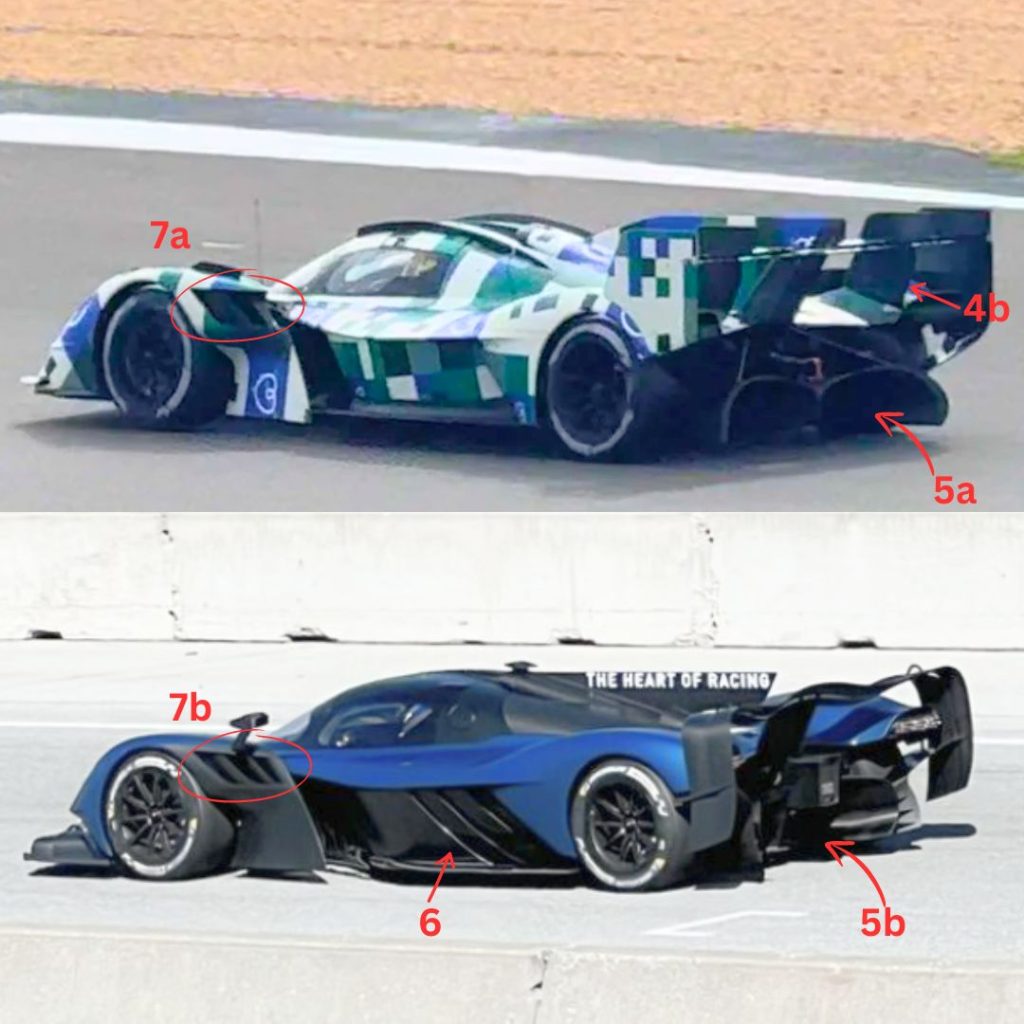
Furthermore, we can see that the rear diffuser of the LMH is different (5a), but follows a similar design philosophy to the AMR-Pro (5b), only losing the strakes positioned behind the rear wheels. The rear wing also has a flat profile, like the front wing, and the endplates are larger and of a more “traditional” shape. On the side, the louvres (6) are no longer present in the LMH version and the ventilation openings in the front wheel arches follow a design very similar to that of the AMR-Pro (7a and 7b). By the way, this solution is very reminiscent of the TMC M1, by Tarso Marques.
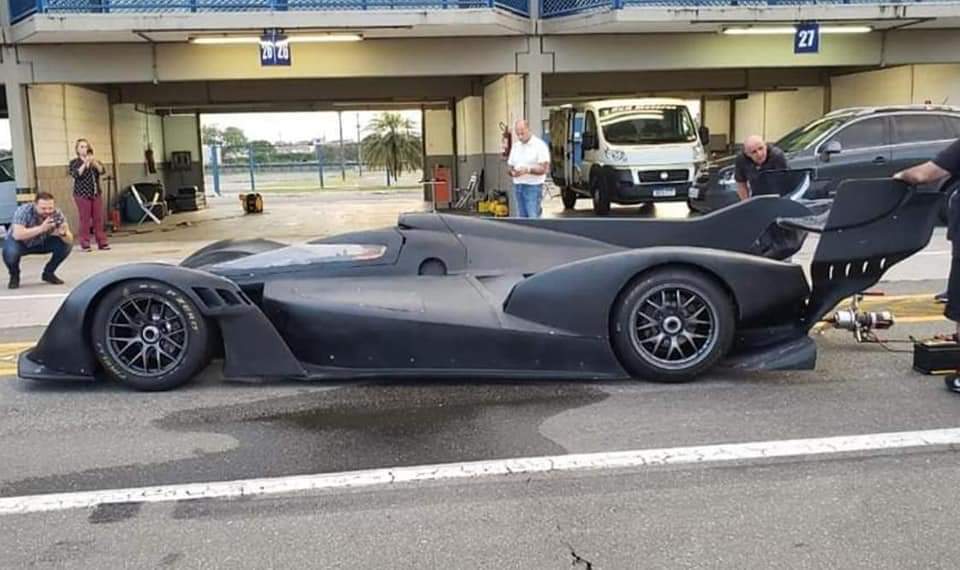
Besides, on the Valkyrie LMH there are several fences: a small one just ahead of the Big Honking Hole (8a), another close to the center of the wheel arches (8b) and another pair on the roof (8c), something which we have seen in several prototypes in both the LMH and LMDh regulations.
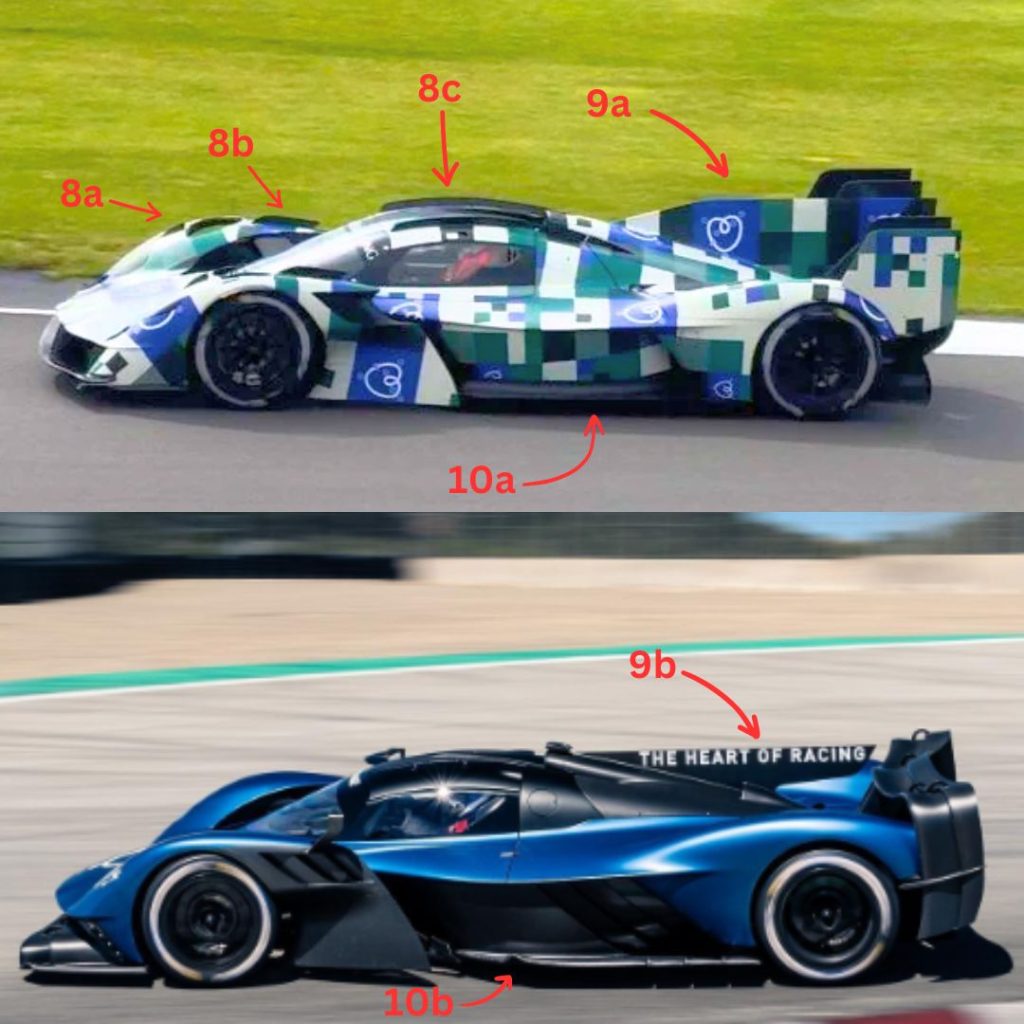
The dorsal fin is also much larger (9a) and has larger surface area than the AMR-Pro (9b), another point of compliance with the regulations. Furthermore, we can see that the floor now has a simplified design (10a), losing elements such as the vortex generators (10b).
Despite the many differences, it is interesting to note that the Valkyrie AMR-LMH maintains the essence of the street Valkyrie and much more with the AMR-Pro, in addition to the excellent naturally aspirated V12 engine that shares the same architecture as the other Aston Martin models.
You might also be interested in:

Ligier JS P325 (2025 – )
Seeking to maintain hegemony for the 3rd Gen of LMP3 prototypes, Ligier developed a series of changes to the victorious JS P320.

